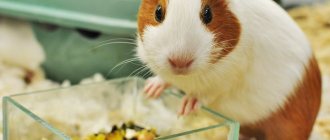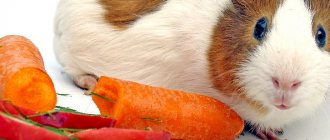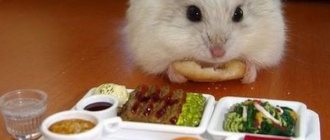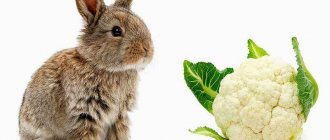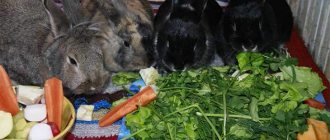Hamsters have become one of the popular caged animals. These little creatures come in many varieties, but some of the most famous are the Djungarian and Syrian hamsters. To keep a furry pet you only need a cage, a bowl and a drinking bowl. But careful care is also needed, feeding hamsters is an important part of caring for them so that they have good health and live a long life within their limits.
Hamster diet
The Syrian hamster is fed 2 times a day, morning and evening. Typically, Syrian hamsters will eat a tablespoon of their diet, but it all depends on the size and activity of the hamster. You can also periodically give pieces of fruit and other treats to your hamsters. At the same time, it is very important to monitor how much food the hamster can take in. If there is more food than he can eat, then the pet will make deposits for his food. It is worth making sure that the food does not start to rot; if this happens, then you need to remove these supplies in a timely manner.
Djungarian hamsters feed once a day. The feeding time of the hamster should be set in the morning or evening, and be sure to feed at the same specific time. Despite their small appearance, Djungarian hamsters are supposed to be given one tablespoon of food or cereal mixture.
Other cereals
Hamsters are allowed to give oatmeal. In dry form it is especially useful. Helps keep teeth healthy and has a beneficial effect on digestion. Dry cereal contains more nutrients. The steamed one is suitable for sick and small animals.
Hercules is a type of oatmeal that is also suitable for feeding hamsters. Rolled oats are softer than rolled oats. Easier to be absorbed by the body.
Sprouted oats can be used as a dietary supplement. Contains substances that have a beneficial effect on the appearance of the coat, the condition of the teeth and bone tissue of the rodent.
You can give semolina porridge to animals, but it is not recommended. It is also difficult to digest and will not bring much benefit. It is allowed to give semolina cooked in water. Milk and spices are strictly prohibited.
Article on the topic: Can hamsters have honey, sugar and chocolate?
Hamsters love to eat lentils dry and steamed. Grains contain useful microelements and vitamins, as well as fatty acids. They have a beneficial effect on pets’ digestion and general condition.
Lentil porridge can be given to both healthy and sick animals. It helps with toxin poisoning and quickly removes them from the body.
It is strictly forbidden to give muesli to animals. The mixture is not a cereal and contains a large amount of substances harmful to babies. Salt, sugar, artificial colors and flavors are contraindicated for rodents.
What can hamsters eat and what can’t hamsters eat?
It is important to have an idea of what you can feed hamsters, what fruits, vegetables or other types of foods can be given, and which are strictly prohibited or undesirable for your furry pet. Many owners give cabbage to their rodent, but only a few know that cabbage is harmful to the hamster’s digestion.
In addition to cereal mixtures and special foods, it is advisable to treat your pet with cereals, fruits, nuts, berries and dried fruits. Hamsters' food must contain a range of nutrients and vitamins. They provide essential vitamins and other beneficial substances.
What to feed hamsters:
- Carrots, broccoli, banana, cherries, currants (black/red), gooseberries, leeks, parsley, dill. These food sets contain vitamin A, which promotes the growth of new cells and has a positive effect on bones, fur and vision.
- Sunflower seeds, oatmeal, oats, peas, buckwheat, wheat, cashews, walnuts. Vitamin B affects the efficiency of digestion and has a good effect on the nervous system.
- Banana, apple, cherry, gooseberry, currant, blueberry, rose hip, radish, parsley, dill, dandelion leaves. These products contain vitamin C, which strengthens the immune system, promotes bone growth and cell repair.
- Sunflower seeds, cashews, wheat, barley, wheat and oatmeal, oats, walnuts, dill, dandelion leaves. These substances contain vitamin E. It is necessary for good blood circulation and muscle function.
Buckwheat
Hamsters not only can eat buckwheat, but they also need it. Buckwheat is a storehouse of vitamins and microelements. It is an easily digestible product that is high in iron, protein and low in carbohydrates.
Buckwheat has a beneficial effect on blood circulation, brain function, nervous system and the general condition of the pet’s body. Increases endurance and removes toxins from the body.
It is recommended to give buckwheat in dry form to healthy pets. It helps maintain the health of your pet's teeth. Sick hamsters are given specially prepared buckwheat. You should not cook the cereal, it will lose its beneficial properties. Soak in hot water and leave overnight. Then dry the porridge and give it to the animals.
Do not brew porridge with milk. Dairy products are poorly digestible by hamsters and negatively affect their well-being.
Article on the topic: What to feed a Djungarian hamster at home, what Djungarian hamsters eat, nutrition table (list: do’s and don’ts)
To summarize, hamsters can be given buckwheat either raw or specially prepared. But don't limit your pet's diet. It is strictly prohibited to exclude dry food, fruits and vegetables.
Hamster food
Hamsters' diet should not be limited to cereals and fruits. Pet stores have a large variety of foods for pet hamsters, but not all of these foods may be beneficial for your little friend. A couple of signs that the food is not suitable for feeding hamsters:
- It is important to first inspect the packaging. It must be sealed and not damaged. If it does not meet this requirement, then moisture may get into the feed, thereby creating the possibility of rotting. Compound. The diet should not contain a large amount of seeds, any foreign fruits or vegetables, or a high ratio of dried chicken or fish. Also, the composition should not contain a lot of fat and the food should not contain prohibited ingredients.
- Food for hamsters can be either universal or for a specific type of hamster. When choosing food, it is important to take this fact into account, because the diet may not have enough or an excess of the vitamins that your pet needs.
Millet and wheat
Don't confuse millet and wheat. Millet is a cereal that is poorly digestible by hamsters. You cannot add it to the animal’s diet. Wheat is a grain and is useful for the animal. This product is added to many dry foods.
Sprouted wheat is especially useful. You can buy it at a pet store or germinate it yourself.
It is not recommended to buy cereals from unverified places. The hamster can be poisoned by the chemicals contained in the food.
Cooking food for hamsters at home
Buying special food is not the only way to feed your furry pet. What to feed hamsters at home? You can make mixtures of grains and dried fruits, feed them with cereals and fresh fruits. There are many recipes for feeding Syrian and Djungarian hamsters.
Mixture of grains “Hamster happiness”. A simple recipe where you need to calculate the ingredients and mix everything. It is very important to monitor the dosage:
- 250 gr. chopped dried apricots.
- 250 gr. dried apples.
- 250 gr. raisins
- 200 gr. pumpkin seeds.
- 100 gr. sunflower seeds.
- 400 grams of barley.
- 300 gr. buckwheat
- 400 g millet.
- 800 gr. wheat.
Some nuances of feeding
You need to care for hamsters strictly according to the recommendations of specialists. When planning a diet, it is necessary to take into account age, current health status and physiological processes such as hibernation or gestation.
Newborn hamsters
In most cases, the female feeds the children on her own if she is provided with the right conditions. Therefore, there is no need to disrupt the natural cycle. If the female runs away, leaving her offspring orphaned, she has to feed them special food. For the first few days after birth, newborn hamsters are given kitten formula. Pets need to be fed every 2 hours using a pipette.
You can feed the offspring of domestic hamsters yourself using kitten formula.
Individuals aged 2 weeks are given infant formula “Gerber” and “Agusha”, cereals without milk and sugar, and also greens grown at home.
3-week-old animals are offered crushed adult food.
Elderly
As a rodent ages, its teeth begin to deteriorate, so it stops eating as before. Against the background of age-related changes, pureed vegetables and chopped feed should be included in the diet. You can give your rodent baby cereals that do not contain milk. And to avoid problems with the gastrointestinal tract, your pet should be periodically fed grain porridge.
Pregnant or nursing
During pregnancy or nursing the offspring, the female needs to be given a lot of protein food. This includes boiled fish, chicken, eggs, shrimp and mealworms.
Sick and weak
If your pet is sick, he will have to be fed using a syringe without a needle. In most cases, warm chamomile is brewed for such rodents. The use of honey or milk is prohibited. If the hamster refuses to eat food, you will have to forcefully give it, otherwise the pet will not recover.
Treats for your hamster
Despite the fact that hamsters only need a mixture of grains and periodic treats in the form of fruits or berries in their diet, there is a desire to diversify their diet with a pleasant treat. Treats for hamsters can be bought at the store, they are called drops, and there are also ways to make them yourself.
Banana sticks
To make a banana stick you need to cut a small piece of banana, mash it in a bowl, add any grains, you can also add some seeds, mix well together. Roll the finished mass into a bar. Leave in a warm place overnight, or you can also put it in the microwave for a minute to let the mixture set. The stick should be semi-solid.
Fruit treat
To prepare this delicacy for one hamster you need:
- Grape berry.
- Raspberry berry.
- Apple slice.
- A teaspoon of honey.
- A mixture of cereals and seeds.
Berries and an apple slice must be peeled and seeds removed and made into a soft mass. Add honey to the resulting substance; you need to round it and roll it in a mixture of cereals. Afterwards, the spherical treats should dry out, after which the sweet treat goes to the hamster.
More about the benefits of cereals
Sprouted grains, in particular wheat, are also very useful for hamsters. It is not difficult to germinate. The wheat grains are first soaked for some time, and then, covered with a lid, placed in a warm place for a couple of days. You can do it another way: rinse and place the wheat grains on a flat plate. Cover the top with gauze moistened with water. In a day, two of the grains will sprout. Dry the sprouted grains and give it to your hamster - it will be better than any vitamin complex.
Article on the topic: Types and breeds of chinchillas with photographs and names of different colors
List of prohibited products
What is strictly forbidden to feed a hamster:
- spicy, salty, smoked and canned foods;
- any spices;
- citrus and exotic fruits (lemons, oranges, tangerines, grapefruits, avocados, etc.);
- onion garlic;
- cabbage;
- potato;
- watermelon;
- mushrooms;
- sweets.
The list of prohibited herbs includes cereal leaves and dandelion. The sharp serrations on these leaves can injure your hamster's cheeks. Dandelion should not be given because of the milky juice.
Controversial issues or what not to feed a hamster
There are products that cause controversy among animal owners. Is it possible to give milk to animals, how much cheese can you give, and what harm can crackers and bread do?
To answer these questions, we will have to return to the diet of animals in the wild:
- Adult animals do not feed on milk, and the composition of cow's milk is not suitable for young animals. Babies fed bread soaked in milk survive only due to their potential health, and not due to proper feeding.
- You should not feed your pet hamster cheese. It is quite fatty and contains a lot of salt: this will harm the rodent.
- Bread and baked goods are completely inedible for rodents, although they will chew them. There are too many harmful components in the form of fat and sugar in crackers and cookies. If you decide to feed something similar, choose unsweetened dryers. It won't be too useful, but in minimal quantities it won't cause any harm.
Rice boiled and dry
Rice is a source of many beneficial substances in its natural form. It undergoes processing before entering the store, which is why it loses all its beneficial properties. Because of this, cereals are not of particular value, and it makes no sense to feed the hamster rice.
In addition, regardless of the method of preparing porridge, it is heavy for the animal’s body, and therefore can lead to digestive diseases. Be especially careful when using wild varieties of rice, as they can lead to intoxication of the animal’s body.
But if you have intestinal problems, you can carefully introduce rice porridge into your diet. Most often it is used for diarrhea, or for the successful growth of young individuals. But for this, it is recommended to feed them rice once or twice a week, using one option for preparing porridge - pre-soaking it for 7-10 hours.
But rice can be used in another form; a medicinal decoction can be made from it, which is used instead of water to treat rodents from diarrhea. It effectively helps eliminate the problem while safely affecting the digestive system.
What to feed rodents? A detailed guide to feeding rats, mice, hamsters and guinea pigs
Domestic rodents include rats and mice, guinea pigs and hamsters, degus, squirrels and chinchillas, and much more exotic animals: for example, capybaras. Rabbits and ferrets are sometimes classified as rodents, although this is incorrect. Rabbits are lagomorphs, and ferrets are predators from the mustelidae family that have nothing to do with rodents.
Each rodent has its own characteristics and needs. Everyone requires a special diet that would provide them with all the necessary microelements, nutrients and vitamins.
We will briefly talk about the most popular pet rodents, food for rodents, needs and a competent menu for every day.
Rats
Rats are omnivorous and unpretentious by nature. They eat almost everything with great pleasure, so the owner must carefully monitor the diet of his pet.
The rat should be fed twice a day - morning and evening, preferably at the same time; rat pups, pregnant and lactating females can be fed three or four times. Every day a healthy adult rat consumes about 80% of its body weight.
What to feed a rat:
- The basis of the diet is cereals. Cereals can be bought ready-made at a pet store, you can cook unsalted porridge without oil, cook pasta, give boiled corn and bread. Buckwheat, millet, barley, and wheat are especially useful for animals.
- Fresh vegetables, fruits and herbs - also daily. This is not only cabbage and carrots, but also tomatoes, pumpkin, cucumbers, apples, bananas, plums, dates, berries - cranberries, blueberries, strawberries, raspberries.
- Additional vitamin treats in the form of “lollipops”, “candies”, “sticks”. All this is sold in pet stores.
- Protein in the form of unsalted meat, cottage cheese, yogurt, cheese, seafood . Rats do not need a lot of protein, in fact, protein diets for rats are harmful and can lead to premature aging. Protein treats can be fed to your pet every few days.
- Rats are very fond of seeds, especially weedy herbs - for example, dandelions; sometimes you can feed your pet sunflower or pumpkin seeds. Treat your rat to meadow herbs: plantain, chicory, shepherd's purse, dandelion, parsley and dill.
What not to feed your rat: chocolate and other confectionery products, smoked sausage, salty and moldy cheeses. You should not give your pet red cabbage, Brussels sprouts, artichokes, legumes, or licorice. Be careful with herbs - mistletoe, tomato leaves, lilies of the valley, tulips, azalea, fern, ivy and begonia are deadly poisonous to rats.
Mice
Like rats, mice are omnivores with a bias towards herbivory. The easiest way is to buy industrial food for your pet at a pet store - the ingredients there are balanced, they provide the pet with all the necessary nutrients, vitamins and minerals.
Mice need to be fed twice a day, preferably at the same time. Mice, pregnant and lactating females - 3-4 times a day.
What to feed mice:
- Grain mixtures - oilseed grains, legumes, walnuts, almonds, peas, soybeans, beans, lentils, oatmeal, bran, bread or wholemeal flour. Mice readily eat hay, and in winter they need to be given sprouted oats.
- Juicy food - fruits, vegetables and greens, which include green salad, spinach, corn, pumpkin, bananas, parsley, potatoes, cabbage, sorrel, cucumbers, carrots, apples, green peas, celery.
- Proteins - cottage cheese, milk (pasteurized and boiled, not sour), you can give pieces of unsalted lard, egg whites.
- Just like rats, mice need to buy extra vitamin treats . The mouse grinds down its growing teeth on them.
What not to feed your mouse: onions, chocolate and garlic, which contain toxic theobromine, peanuts, citrus fruits, poisonous herbs.
Guinea pigs
Guinea pigs are fed two to three times a day, pregnant and lactating females three to four times. It is advisable to feed at the same time so that the animal develops a certain diet. On average, a healthy adult pig eats about 8% of its weight, that is, approximately 80 g for a kilogram. This is one or two spoons of dry specialized food per feeding.
Unlike rats and mice, pigs are herbivores, and the basis of their diet is hay. Hay should be kept in the cage at all times: the pet receives useful substances from it, and constant chewing helps to wear down the teeth.
What to feed your guinea pig:
- Hay - as mentioned above, hay should be in the cage at all times.
- Grain mixtures consisting of wheat, oats, barley, lentils, millet, sunflower seeds, corn, peanuts, peas. Pet stores sell ready-made food mixtures for guinea pigs.
- Fresh vegetables and fruits - cucumbers, carrots, tomatoes, cabbage, broccoli, pumpkin, bell peppers, beets, rutabaga, Jerusalem artichoke, sweet corn, apples, pears, bananas, tangerines and oranges, seedless grapes, melon, watermelon, strawberries.
- Fresh herbs - dandelion, dried nettle, spinach, dill and celery, alfalfa, clover, yarrow, plantain, dandelion.
It is useful to give pigs something to wear down their teeth - for example, branches of alder, apple and pear trees, willow, birch. Solid vitamins for grinding teeth can also be bought at a pet store, along with a salt stone that hangs inside the cage. From it the animal receives the necessary salt. Table salt should not be given to pigs!
What not to feed a guinea pig: onions, radishes, rhubarb, apricot, peach and cherry, all kinds of animal products - the pig does not need or benefit from them, all indoor decorative flowers, some types of herbs - St. John's wort, datura, night blindness, belladonna, celandine , lily of the valley, poppy, henbane, buttercups, etc. You should not give your pigs salted, smoked, fried foods, white bread, confectionery, chocolate.
Hamsters
Hamsters are fed twice a day, morning and evening; pregnant and lactating females, as well as hamsters, are fed a little more often. Some hamster breeders recommend feeding their pets once, some are inclined to feed them twice a day, but the evening portion should be larger than the morning portion, because hamsters are nocturnal animals.
In general, the diet of hamsters is similar to the diet of rats and mice.
What to feed your hamster:
- Cereals and nuts - ready-made mixtures for hamsters, wheat, buckwheat, oats, legumes, barley, all kinds of nuts, except almonds, melon, pumpkin and sunflower seeds.
- Fruits and vegetables - apples, pear, banana, apricot, melon, peach, seedless grapes and raisins, pumpkin, carrots, tomatoes, eggplant, corn, green beans, Chinese cabbage, broccoli, chickpeas, celery, Jerusalem artichoke, semi-finished vegetable mixtures, squash, turnips, beets, strawberries, blueberries, gooseberries, currants. You can give dried fruits - banana chips, dried apricots, dried apples.
- Greens and tree leaves - clover, dandelion and plantain, parsley and dill, leaves of willow, beech, ash, cherry, pear, apple, maple, poplar, walnut.
- Animal proteins - your hamster should be given them occasionally, about 2-3 per week, and not much: boiled chicken, chicken or quail eggs, cottage cheese and yogurt, boiled fish and shrimp, worms, butterflies, and grasshoppers bought at pet stores.
As treats, you can give your hamster rose petals and unsalted popcorn without butter.
What not to feed a hamster: hamsters should not be given cheese, ready-made food for other animals, white and brown bread, potatoes, milk, garlic and onions, sausage, fried and fatty foods, confectionery and chocolate, poisonous plants, mushrooms, citrus fruits , mint, sorrel, cabbage. Meadow grasses cannot be collected near roadsides and generally within the city. You should not give hamsters insects caught in the wild.
The easiest way is to feed rodents with ready-made mixtures, which are sold in pet stores, plus give fresh herbs, vegetables and fruits in small quantities every day.
Vitamin supplements will be useful, especially important for young and elderly pets, pregnant and lactating females. Sometimes you can pamper your pets: give them special cookies, candies and treats that will not only please him, but also have a positive effect on his health. Related Products:




